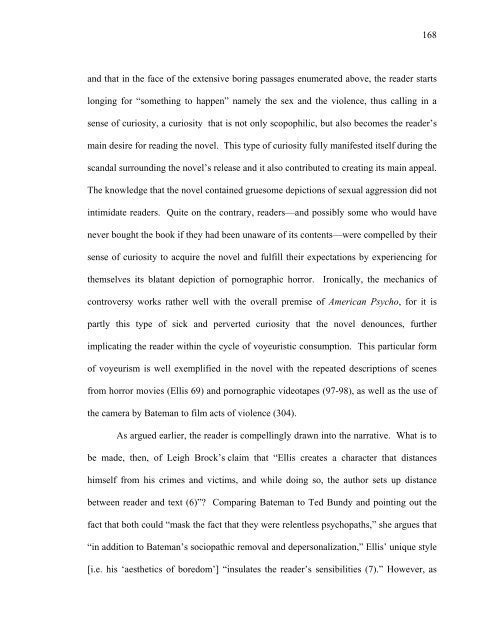Untitled - Sexey's School Moodle
Untitled - Sexey's School Moodle
Untitled - Sexey's School Moodle
You also want an ePaper? Increase the reach of your titles
YUMPU automatically turns print PDFs into web optimized ePapers that Google loves.
and that in the face of the extensive boring passages enumerated above, the reader starts<br />
longing for “something to happen” namely the sex and the violence, thus calling in a<br />
sense of curiosity, a curiosity that is not only scopophilic, but also becomes the reader’s<br />
main desire for reading the novel. This type of curiosity fully manifested itself during the<br />
scandal surrounding the novel’s release and it also contributed to creating its main appeal.<br />
The knowledge that the novel contained gruesome depictions of sexual aggression did not<br />
intimidate readers. Quite on the contrary, readers—and possibly some who would have<br />
never bought the book if they had been unaware of its contents—were compelled by their<br />
sense of curiosity to acquire the novel and fulfill their expectations by experiencing for<br />
themselves its blatant depiction of pornographic horror. Ironically, the mechanics of<br />
controversy works rather well with the overall premise of American Psycho, for it is<br />
partly this type of sick and perverted curiosity that the novel denounces, further<br />
implicating the reader within the cycle of voyeuristic consumption. This particular form<br />
of voyeurism is well exemplified in the novel with the repeated descriptions of scenes<br />
from horror movies (Ellis 69) and pornographic videotapes (97-98), as well as the use of<br />
the camera by Bateman to film acts of violence (304).<br />
168<br />
As argued earlier, the reader is compellingly drawn into the narrative. What is to<br />
be made, then, of Leigh Brock’s claim that “Ellis creates a character that distances<br />
himself from his crimes and victims, and while doing so, the author sets up distance<br />
between reader and text (6)”? Comparing Bateman to Ted Bundy and pointing out the<br />
fact that both could “mask the fact that they were relentless psychopaths,” she argues that<br />
“in addition to Bateman’s sociopathic removal and depersonalization,” Ellis’ unique style<br />
[i.e. his ‘aesthetics of boredom’] “insulates the reader’s sensibilities (7).” However, as



